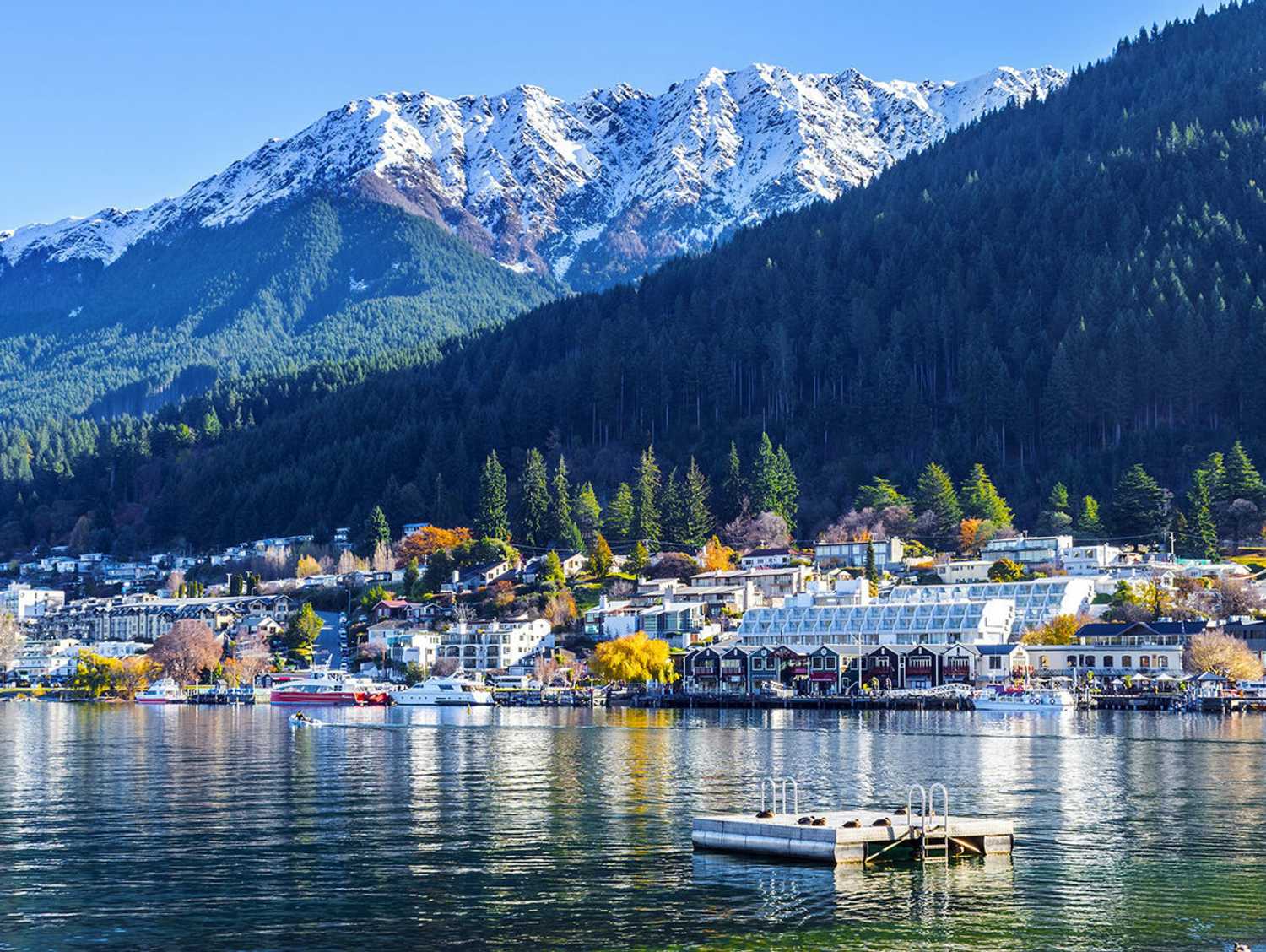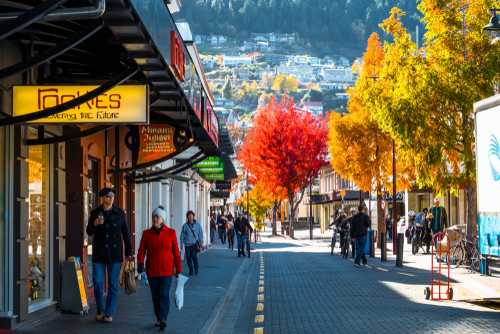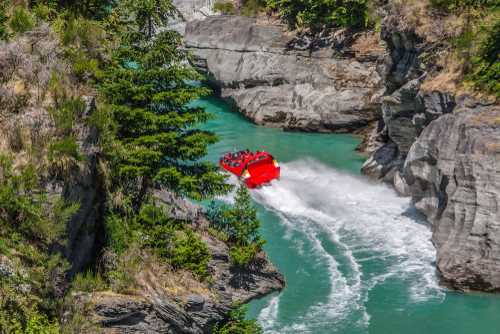
Queenstown: Tourism’s Top Town
Demand for housing and labour are putting the brakes on growth in New Zealand’s tourist mecca of Queenstown. Claire Connell discovers that the town needs an influx of investment and infrastructure.
19 October 2021
Queenstown’s been a boom town. Its population has been growing significantly, both in visitor numbers and those moving permanently to the region. This makes it a great place for investment.
It’s easy to see the appeal. Queenstown has stunning scenery – probably some of the best in New Zealand – a bustling town centre full of great eateries and shops, and lots of activities to do in both summer and winter.
But with the growth has come rising house prices, and a shortage of labour to prop up the tourism and construction industries. Infrastructure is lacking.
Now the growth is levelling off, what does this mean for the region?

The major industries
Tourism and construction are the two major industries. And each feeds off the other.
Destination Queenstown chief executive Graham Budd says visitor numbers are still growing, but the rate of growth has slowed.
“But frankly, it needed to. For the last five or six years we’ve had extraordinary growth.”
In the last 10 years, the region has seen roughly a doubling of the number of visitors, in both the domestic market (a third of all visitors) and the international market.
Budd says tourism is the “economic engine room” of Queenstown. The region gets 3.3 million visitors annually.
Growth has been a good thing, Budd says. “It’s critically important that we maintain a level of growth that keeps the engine room growing.”
Queenstown mayor Jim Boult says numbers through Queenstown Airport have grown 16, 13, 12 and 10 per cent respectively in the past four years.
“I’m pretty sure we’re the only airport in the country that’s had double-digit growth,” he says.

Is the plateau something to worry about?
Boult doesn’t think the dip in growth is a concern. He’s been involved in the tourism industry for 37 years, and says ups and downs are common.
Two exceptions, when growth stopped, were the share market crash in 1987, and during the Global Financial Crisis, he says.
“Other than that, it’s a steady climb with some plateaus. The current plateau is caused by a shortage of tourism accommodation in town.”
Boult says that’s being addressed, with several hotels opening in the past year or two. More are predicted, which will add an extra 1,000 hotel rooms over the next two or three years.
The Chinese economy is also having an impact, “because of their nervousness about their relationship with the US”, Boult says. United Kingdom visitor numbers were also down because of the Brexit uncertainty.
Property prices at a high
Possibly the only downside of moving to Queenstown is glaringly obvious – property prices in some areas have outstripped Auckland as the most expensive in New Zealand.
Bindi Norwell, chief executive of the Real Estate Institute of New Zealand, says median prices in the Queenstown Lakes district continue to be higher than in Auckland and have been since June last year.
The median is now NZ$975,000.
“The foreign buyer ban tended to dominate many of the real-estate conversations towards the end of the year,” Norwell says.
“However, looking at our data, there were more sales in November, which was the month after the ban came into effect, than there were in October.
“Median prices for the district increased by NZ$100,000 from October to November, suggesting that the ban has had little impact to date on activity in the [district] since it was introduced in October 2018.”
Norwell says Queenstown appears to be in a transitional period, where vendors are still expecting a certain price, and buyers are realising that they have the ability to negotiate – realistic expectations may help, she says.
Norwell says there seems to be a shortage of supply for first-home buyers and properties under the NZ$1 million mark. There’s more supply in the NZ$2 million to NZ$3 million range, but less demand because places need to be “something spectacular” to warrant the cost.
Trade Me Property spokesperson Aaron Clancy says with the average asking price for a property in Queenstown Lakes now at $1.2 million, some Kiwis will be put off by the sheer size of the mortgage they’d need to own a property.
“Investors will look for rental yield and capital growth. If they believe they can continue to get capital growth they will take a lower rental yield. However, if they believe capital growth is going to slow down, they’ll require a better rental yield and may look to put their money elsewhere.”
Boult says Queenstown’s percentage population growth is the highest in New Zealand “by a country mile”.
On present predictions, Queenstown population doubles roughly every 10 years, creating significant demand for housing, he says.
“This is something that gravely concerns the council, because when your average house price is in excess of a million dollars, how do folk on an ordinary income afford to buy a house?”
One of the council’s initiatives is Secure Home, an assisted ownership programme for residents who are committed to staying in the area.
People purchase the properties through a 100-year lease arrangement, with a Community Housing Trust retaining ownership of the land in perpetuity.
“This cuts the cost of a new house in half,” Boult says.
Labour shortage is slowing growth
Anna Mickell, chief executive of the Queenstown Chamber of Commerce, says a shortage of staff is slowing things down for the region. Productivity in Queenstown is lower than in other parts of New Zealand.
“It’s such an unusual place – it’s so expensive to live here, because we don’t have the housing. We have some real headwinds ahead to deal with that. Across construction, hospitality, accommodation, in some parts of IT – it’s difficult to get staff.
“That’s our biggest challenge in the region – along with housing, which is why the labour is so hard to get. Lots of people would like to live here, it’s just very difficult to do so.”
Business confidence is good
Boult says Queenstown business owners are generally positive.
“Some are saying the numbers are a bit soft, of recent times, but I’m seeing good reinvestment back into business. What I’m seeing is a lifting of the yield from tourists. For too long, New Zealand chased purely numbers and we are now starting to chase value, and that’s the space that we should be in.”
Mickell agrees business confidence is pretty good. But she says the infrastructure demands on residential and business ratepayers and business ratepayers have an effect.
The visitor population is so high compared to the local ratepaying population, she says. The ratio is about 1 to 34, so there’s one ratepayer for 34 international visitors. Auckland has 1:1.
“It’s a massive overhead burden for people living here. The challenges of improving the infrastructure are really beyond the ratepayer base – they can’t rate people enough to pay for the infrastructure demand.”
A proposed visitor levy is one way to combat this. It’s being voted on in early June.
Graham Budd, of Destination Queenstown, says some core infrastructure has not been invested in enough to keep up with population growth.
He calls it the town’s ‘Achilles heel’ in terms of the growth they’ve experienced.
“The biggest impact – and daily impact – is in our roading and transport network.
“Getting in and around our place at some peak times can be frustrating.
“I’m as frustrated as many locals are about us lagging in that space. But I’m also heartened by our local and regional councils, and others, that are addressing that with a bunch of measures.”
What is Queenstown’s future?
No one tries to say that Queenstown is affordable. In fact, the shortage of housing and the price of it makes living there unaffordable for many.
“We’re certainly not the cheapest place in the world to live,” Boult says. “It’s not cheap, but maybe it’s the price you pay for living in the best part of the world.”
He says there’s lots of talk about over-tourism in places like Venice and Barcelona. Those involved need to reasonably manage the growth, so Queenstown never becomes like those places, he says.
“But we’re miles from [experiencing] over-tourism at the present time. You’ve only got to go for a walk on our walking tracks to see how few people you come across, to really realise just how special the experience of coming here is.”
A lot of people tell Boult that he needs to slow the region’s growth.
“But we live in a free country and if you can afford to buy a house, I can’t stop you from moving here. What we can do is try to provide the infrastructure that makes living here an attractive proposition.
“It’s the best part of the world. We are now recognised as one of the most attractive destinations in the world for visitors. We are in one of the most scenically stunning parts of the world. We have a climate to die for.
“This morning I woke up and went for a run around Lake Hayes at 5am, the temperature was 3°C. Not a cloud in the sky, not a breath of breeze, it’s going to be a beautiful 20-odd degree day. Our air is beautifully clean. I feel very lucky to live here.”
Published 26 May 2019
This article does not contain any financial advice and has not taken into account any particular person’s circumstances. Before relying on it, we recommend you speak with a financial adviser. This story reflects the views of the contributor only. Content comes from sources that we consider are accurate, but we do not guarantee that the content is accurate.
Informed Investor's content comes from sources that Informed Investor magazine considers accurate, but we do not guarantee its accuracy. Charts in Informed Investor are visually indicative, not exact. The content of Informed Investor is intended as general information only, and you use it at your own risk.


